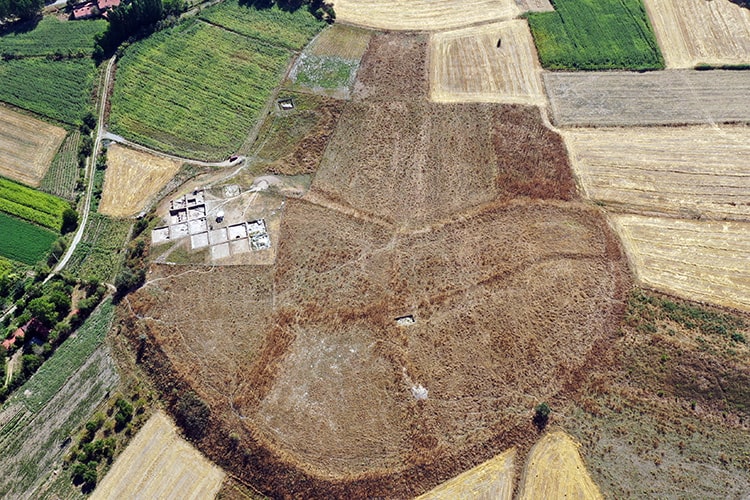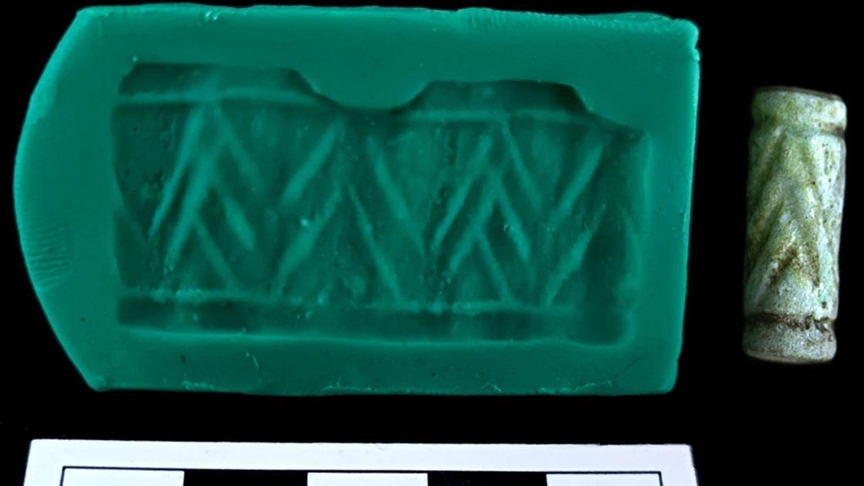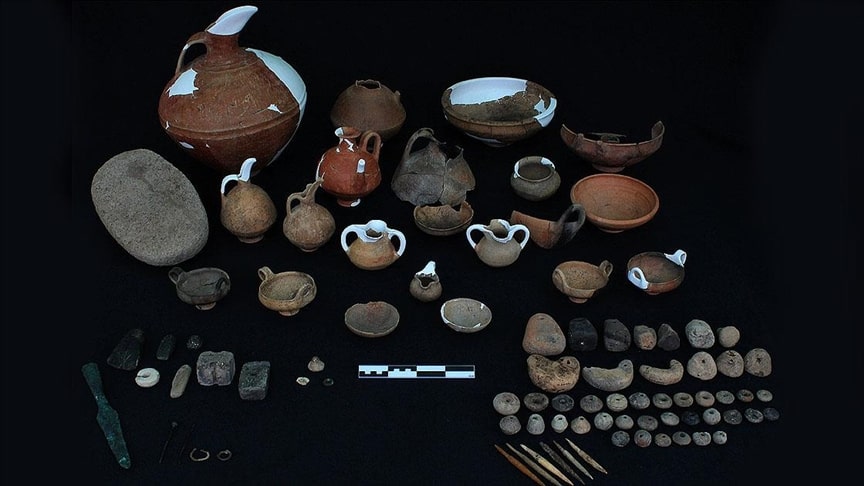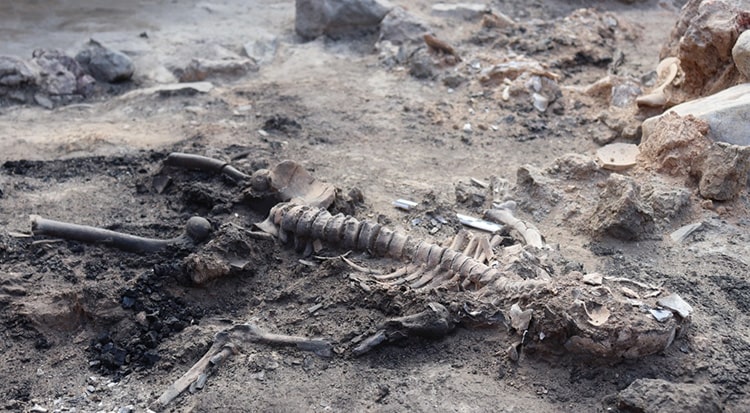
4000-year-old ceramic seal discovered at Tavşanlı mound, known as the “heart of Kütahya”
A 4000-year-old ceramic seal was discovered in Tavşanlı mound, also known as the “Heart of Kütahya” because it resembles the shape of a heart when viewed from the air, in the Tavşanlı district of Kütahya in western Türkiye.
The excavation of Tavşanlı mound continues under the chairmanship of Prof. Erkan Fidan, Head of the Department of Archaeology at Bilecik Şeyh Edebali University, Faculty of Humanities and Social Sciences.
A 4,000-year-old ceramic seal was discovered in the ancient settlement area, which was determined to have been completely burned down as a result of an attack towards the end of the Colonial Age.

Ceramic stamp seals have been found in the excavations of Acemhöyük, Kültepe Alisar and Konya Karahöyük dating to the Assyrian Trade Colonial Period. They were also found in the cemetery area of Gordion dating to the Early Hittite Period.
Spread over an area of approximately 650×700 meters, the Tavşanlı mound has a long settlement history dating back 8100 years. With this feature, it is the oldest known settlement in Kütahya.
The mound contains layers belonging to different periods such as the Bronze Age, Assyrian Trade Colonies Age and Hittite Empire.

It attracted worldwide attention with unique finds such as 3700-year-old brain and skin remains found during excavations in 2023. These finds provide important information about the living conditions and the way of death at that time.

The discovery of ceramic seals similar to those found in Kültepe and Acemhöyük, the great trade centers of Central Anatolia, in the excavations in Tavşanlı is a discovery that proves the existence of other trade routes between east and west in ancient times.
You may also like
- A 1700-year-old statue of Pan unearthed during the excavations at Polyeuktos in İstanbul
- The granary was found in the ancient city of Sebaste, founded by the first Roman emperor Augustus
- Donalar Kale Kapı Rock Tomb or Donalar Rock Tomb
- Theater emerges as works continue in ancient city of Perinthos
- Urartian King Argishti’s bronze shield revealed the name of an unknown country
- The religious center of Lycia, the ancient city of Letoon
- Who were the Luwians?
- A new study brings a fresh perspective on the Anatolian origin of the Indo-European languages
- Perhaps the oldest thermal treatment center in the world, which has been in continuous use for 2000 years -Basilica Therma Roman Bath or King’s Daughter-
- The largest synagogue of the ancient world, located in the ancient city of Sardis, is being restored











Leave a Reply